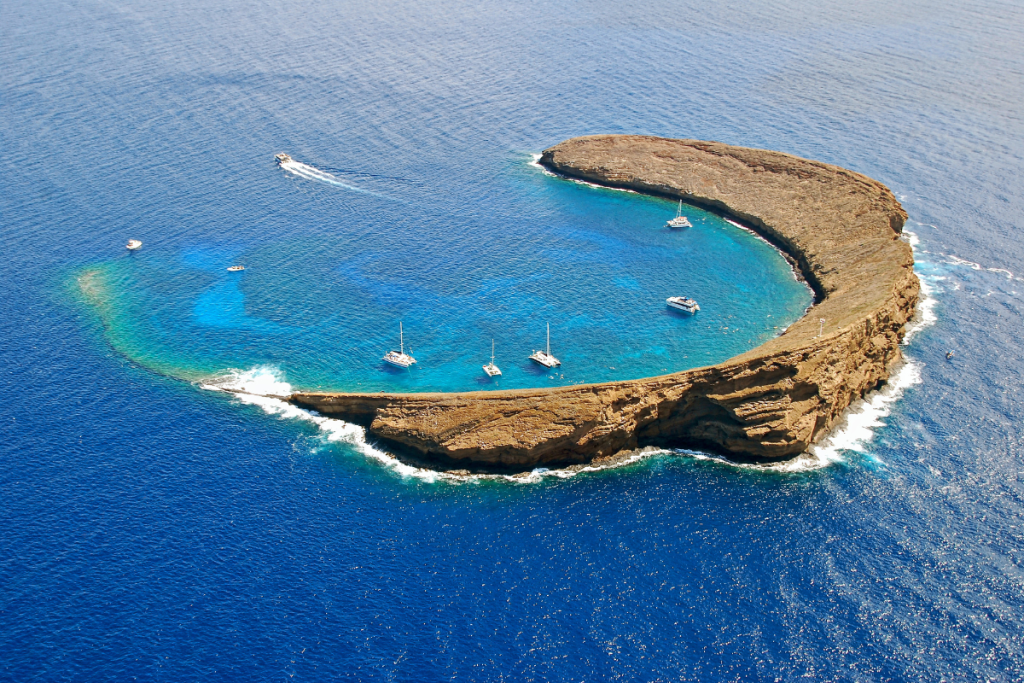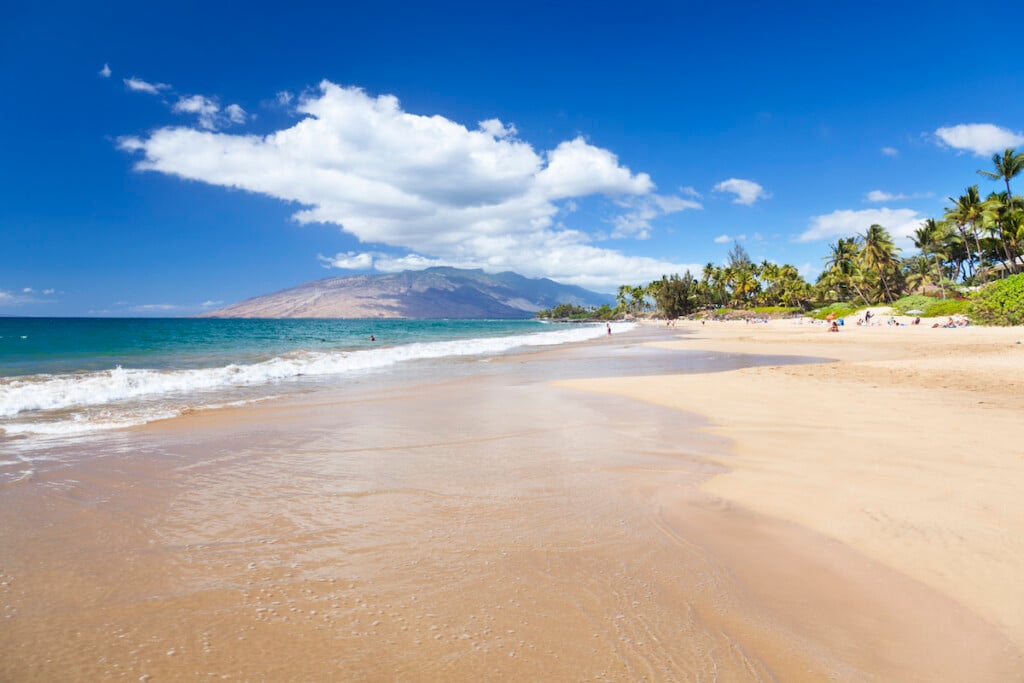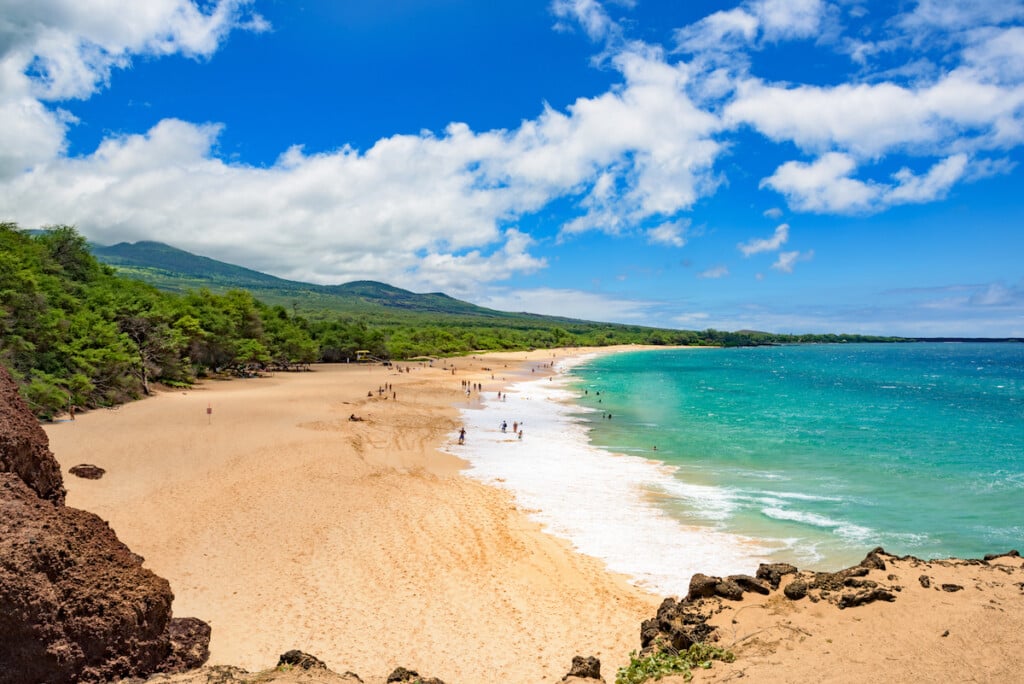7 Tips for Snorkeling Molokini
The crescent-shaped cinder cone off the island of Maui is every snorkeler’s dream. Here’s how to make the most of a trip to Molokini.

Even with poor conditions, snorkelers can see up to 150 feet underwater in the ocean surrounding Molokini. It’s this unmatched visibility beneath the ocean’s surface that makes exploring the coral reefs and marine life at the island atoll so memorable, says Brian Barns, a captain at Trilogy Excursions. Typically, the visibility reaches 200 feet, allowing snorkelers to spot yellow tangs and parrot fish a dozen feet away. But swimmers don’t have to look far, as tiny silver fish dart by just inches away.
Home to more than 250 species of tropical fish, including the humuhumunukunukuāpuaʻa, Molokini is a partially submerged cinder cone about three miles off the coast of Maui. The cinder cone last erupted some 230,000 years ago and what remains is a tiny island that stretches 18 acres, with a peak elevation of a mere 160 feet and surrounded by pristine waters.
For diving enthusiasts, snorkelers and visitors to Maui, exploring the underwater ecosystems around Molokini is a one-of-a-kind experience. However, even the most avid divers and snorkelers should prepare. From avoiding a painful sunburn to safety pointers, here are 7 essential tips to know before heading out on a snorkel trip of a lifetime.
1. Cover up from the sun
While most snorkel tours depart to Molokini early in the morning, the sun’s rays are already strong. As a result, you’ll be under the grueling sun for more than just an hour or two. One of the best ways to be protected from the sun’s harmful rays is by covering up. Wear long sleeves on the boat’s deck and wear a rash guard in the water.
2. Wear reef-safe sunscreen
If you forgo a long-sleeve shirt and rash guard, apply reef-safe sunscreen—and this is critical. Coral reefs in Hawaiʻi and around the world are at risk of coral bleaching due to rising ocean temperatures. Chemicals such as oxybenzone and octinoxate in sunscreen are found to make coral more susceptible to bleaching. While it’s certainly no fun to have an embarrassing tan or sunburn, it’s imperative to help protect the fragile reefs. Fortunately, most tour boats have containers of reef-safe sunscreen on board.
3. Be prepared for motion
For those prone to motion sickness, be prepared. The ride to Molokini is typically smooth, but the return journey can be tumultuous. Late in the morning, the wind and currents pick up and the bow, or front of the boat is known to feel like a roller coaster. If you start to feel seasick, the best bet is to head to the stern of the boat, or the back where it’s most stable. Just don’t go underneath the boat into the cabin. This is one of the worst spots to be.
4. Take a float device if it is offered
From colorful noodles to thin vests, most tour groups provide personal flotation devices. While you may be a confident swimmer, you should still take one. These devices are designed to help swimmers stay afloat, provide a place to rest and the bright colors make snorkelers more visible in the vast ocean.
5. Just float (Tip 4 will make this easier)
Captain Barns of Trilogy Excursions recommends snorkelers just float. Barns has been a captain at Trilogy for seven years but has more than 20 years of experience boating. “Go slow and take it all in,” he advises. “If you use as little energy as possible, you can be out there for an hour.” As a result, you’ll have more time to swim with various tropical fish, enjoy the bright coral reef and try to spot rare marine species including eels and octopi.
6. Buddy up when snorkeling
This is a tip often shared on snorkel tours. Partner up with at least one other person, especially if you’re snorkeling solo, and remember how many members are in your party. Snorkel tours do head counts, but it’s wise to also take account of your own group. You don’t want to be stranded in the waters at Molokini and you don’t want to leave behind a family member. And it happens. Every year, snorkelers are left behind.
7. Pack a pair of dry clothes and towel
Remember to pack a towel and a dry pair of clothes after snorkeling. Again, the wind is strong on the return journey to the harbor, so it is nice to dry off after snorkeling. However, save the dry clothes for when the boat docks. Sea water often splashes onto the deck on the bumpy ride back.


